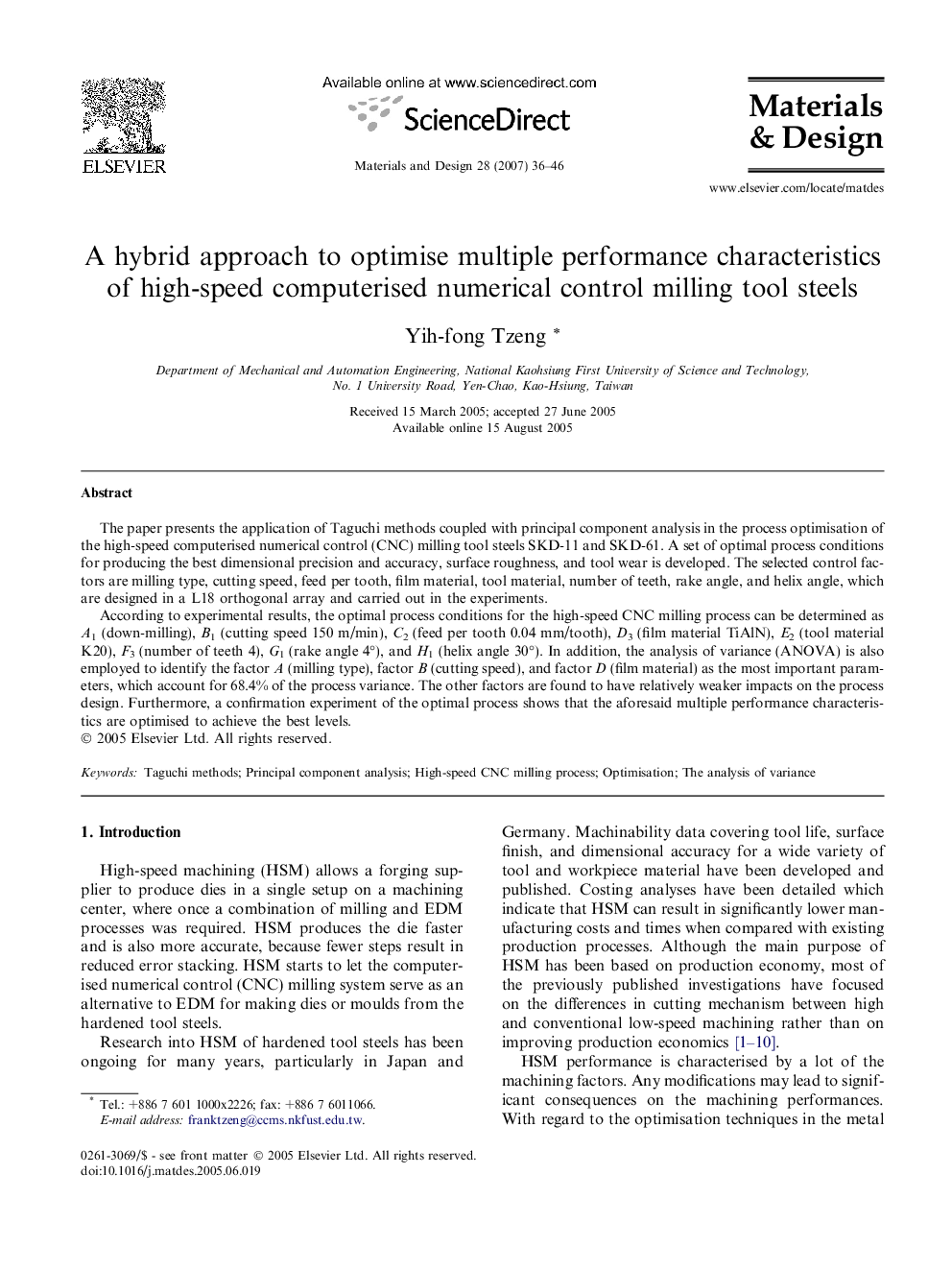| Article ID | Journal | Published Year | Pages | File Type |
|---|---|---|---|---|
| 833653 | Materials & Design (1980-2015) | 2007 | 11 Pages |
The paper presents the application of Taguchi methods coupled with principal component analysis in the process optimisation of the high-speed computerised numerical control (CNC) milling tool steels SKD-11 and SKD-61. A set of optimal process conditions for producing the best dimensional precision and accuracy, surface roughness, and tool wear is developed. The selected control factors are milling type, cutting speed, feed per tooth, film material, tool material, number of teeth, rake angle, and helix angle, which are designed in a L18 orthogonal array and carried out in the experiments.According to experimental results, the optimal process conditions for the high-speed CNC milling process can be determined as A1 (down-milling), B1 (cutting speed 150 m/min), C2 (feed per tooth 0.04 mm/tooth), D3 (film material TiAlN), E2 (tool material K20), F3 (number of teeth 4), G1 (rake angle 4°), and H1 (helix angle 30°). In addition, the analysis of variance (ANOVA) is also employed to identify the factor A (milling type), factor B (cutting speed), and factor D (film material) as the most important parameters, which account for 68.4% of the process variance. The other factors are found to have relatively weaker impacts on the process design. Furthermore, a confirmation experiment of the optimal process shows that the aforesaid multiple performance characteristics are optimised to achieve the best levels.
